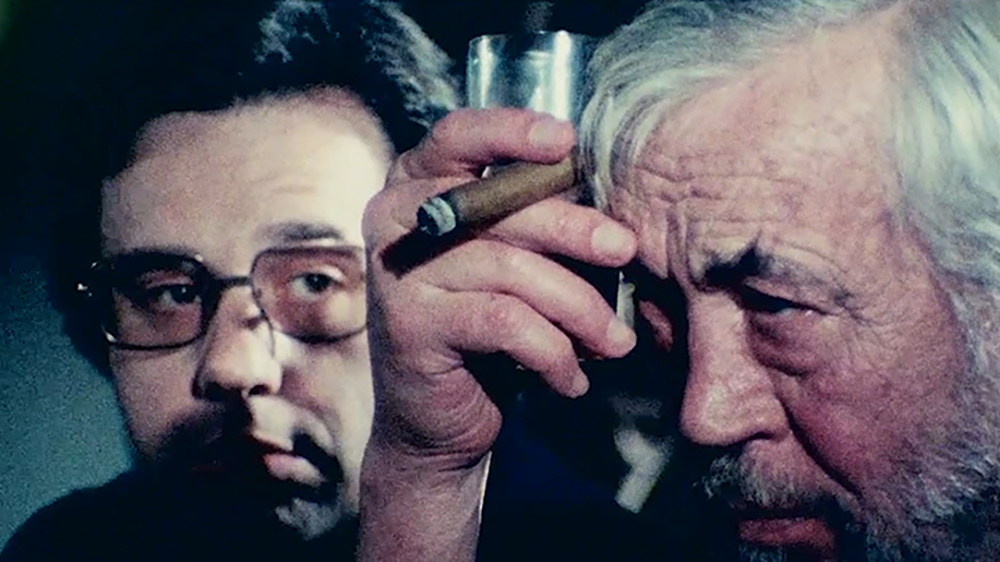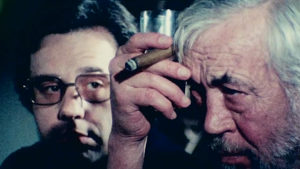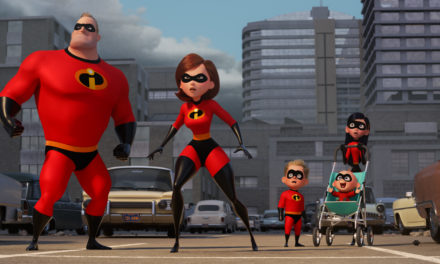Cinema is, by definition, spectral. When we watch old films, we are not only witnessing history; we are seeing the movements of those long dead, their ghosts captured in a strip of flammable plastic. The projected image is our medium, allowing us to communicate with our past. And in cinema’s past, perhaps no name carries more weight than Orson Welles. His first feature, 1941’s “Citizen Kane,” has been widely considered the greatest film ever made. But Welles faced a number of hurdles during the rest of his career, from bankrupt productions and studio interference to a handful of unfinished films. One such unfinished project was “The Other Side of the Wind,” which wrapped in 1976 and was left incomplete due to Welles’ death in 1985. Over 40 years later, producer Frank Marshall and Welles’ apprentice Peter Bogdanovich teamed with streaming giant Netflix to complete the master’s final film, which was unveiled on Nov. 2 after decades of speculation. It’s a wonder to behold, a symbol of Welles’ tireless innovation — and his determination to turn a critical eye back onto himself and film culture at large.
On the last day of his life, the so-called “Ernest Hemingway of the cinema” J.J. “Jake” Hannaford (John Huston) prepares to unveil his most ambitious film to date, mysteriously titled “The Other Side of the Wind,” at his 70th birthday party. The film stars an unnamed ingenue (Oja Kodar) as a possible terrorist who is endlessly trailed by a hippiesh motorcyclist. Hannaford’s cut of the film is incomplete, however, due to its leading man John Dale’s (Robert Random) furious exit from the set during the filming of a love scene. Nevertheless, the party is attended by several high-profile guests, including Hannaford’s protege Brooks Otterlake (Bogdanovich), producer Billy Boyle (Norman Foster), actress Zarah Valeska (Lilli Palmer) and relentless film critic Julie Rich (Sarah Strasberg), who futilely attempts to cover the event. A swarm of documentarians and reporters surround Hannaford’s guests, capturing every moment of the party on film. Copious amounts of liquor are consumed and technical difficulties run amuck, turning the celebration of Hannaford’s latest work into a pressure cooker of narcissistic confrontations and all-out chaos.
It’s safe to say that the narrative of “The Other Side of the Wind” is near-impossible to synopsize. Instead, Welles’ film takes on a dizzying meta-structure, one that feverishly collides faux-documentary footage of the party with extracts from the film-within-the-film (which sports the same title). Portions of the fictional movie are shot on widescreen 35mm film, encompassing broad vistas and optical trickery as a sort-of parody of the era’s European art cinema. The rest of the film, spanning from the ride to the party to the morning after, is pieced together by staged footage from the reporters’ cameras, shot in Academy-ratio 16mm, switching from color to black-and-white at apparent random. Welles and Bob Murawski’s editing shines here, contrasting the quiet meaninglessness of Hannaford’s project with the emotional chaos of the party’s occurrences. The editing operates with a fury, snapping back-and-forth between formats with a whiplash-like intensity. As a whole, the film is overwhelming in its form, yet seamlessly adhered by Michel Legrand’s jazz and avant-garde influenced orchestrations.
Make no mistake, “The Other Side of the Wind” is coherent in its satire. Through Hannaford’s character, Welles constructs a self-destructive image of the director as a man drunk with power and admiration. While Hannaford’s explosive anger and perpetual cigar are obvious allusions to Welles himself, the character reflects many filmmakers of Welles’ generation, most obvious of whom is Huston. Hannaford performs a brand of macho stylings, effortlessly switching between gun-toting rebel and soft-spoken intellectual. When a professor questions this performance of masculinity, he retorts with ferocious slurs.
Bogdanovich’s Otterlake is a modernized version of this Hollywood man, wrapping his cynical insecurity behind a thick turtleneck sweater. The alpha male evolves into self-righteous pomposity, with Hannaford and Otterlake struggling to conform to each other’s visions of masculinity. Take their relationships with Julie, a clear stand-in for critic Pauline Kael. When questioned by her, Hannaford responds with a literal backhand. Otterlake offers a backhanded denial of her ability, instead, condescending her as a “little lady.”
Crucial to this critique is the film’s clear relationship to cinematic history, especially as it occurred during production. Hannaford and Otterlake’s relationship is an ugly reflection of Welles and Bogdanovich’s bond as mentor and mentee, folding their own hardheaded directorial personalities into a toxic mobius strip. As far as final statements go, “The Other Side of the Wind” is as angry as they get. It’s a funny film, no doubt, but there’s something terrifying caught in its storm. The Hollywood of Welles’ age left him behind in its adherence to classical tradition, while the Hollywood of Bogdanovich’s era would soon disappear up its own crevice of pseudo-intellectual excess. In any case, a project as difficult and demanding as this would necessarily be left behind. “The Other Side of the Wind” is no artifact or nerdy curiosity. It’s a living, fire-breathing work of art, unfinished because of the nature of its subject matter. That it was completed in 2018, amid a pretense of industry doom, feels premeditated on Welles’ part.
With “The Other Side of the Wind,” Welles has come back to visit us. But his intention is not to haunt. He comes bearing lessons, like the ghosts dreamt up in Dickens’ “A Christmas Carol.” Thus, it’s fitting that his final thoughts, a shotgun blast of scathing strikes aimed at the dummy head of Hollywood hubris, are being broadcast in the digital sphere. Just as Welles’ infamous radio rendition of “The War of the Worlds” could be beamed into any American home in 1938, Netflix can be queued up by anyone with a subscription and internet connection, spreading “The Other Side of the Wind”’s caustic warning across digital airwaves. Welles saw the all-consuming rabbit-hole of internet culture coming, as well as Hollywood’s belligerent resistance to reconstruct itself in response. The winds of change take you with them or blow you to pieces. Either way, the self you once knew is dead, but cinema can bring it back to life.






